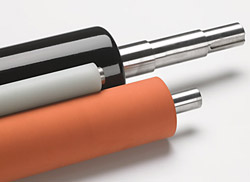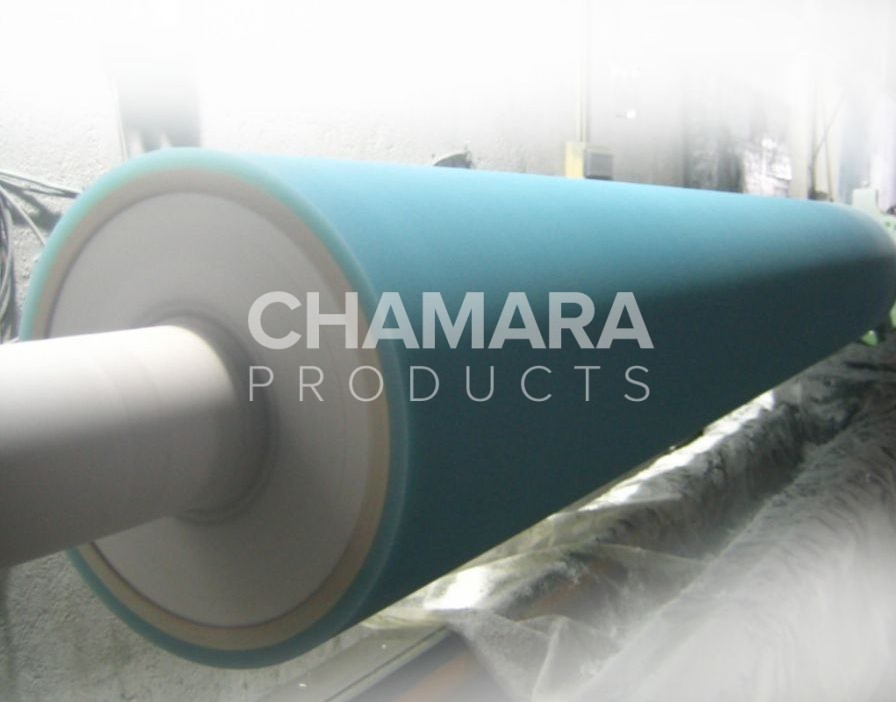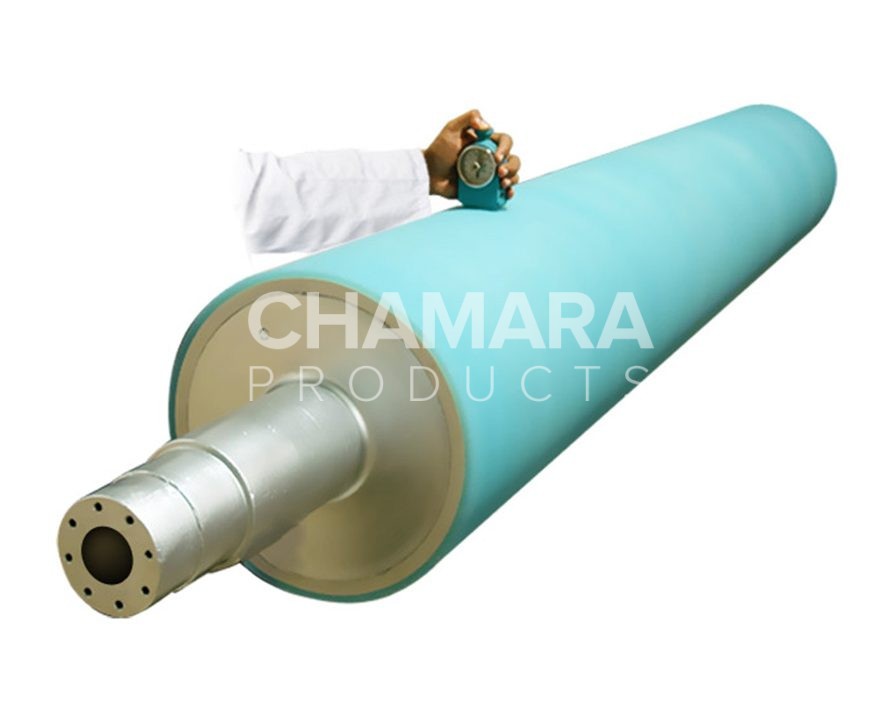Silicone Rubber Rollers
Cmmon industries that use silicone rolls for a variety of applications include paper and pulp, for newspaper printing, commercial printing, and paper decorating; industrial manufacturing, for printing presses and many types of process and machining equipment for applications such as embossing, laminating and banding; food and beverage, for packaging and bottling applications; electronics, for computers, print circuit boards (PCBs), laser printers and photocopiers; and poly films, for corona treatments.
Additional industries that utilize silicone rollers include mining, commercial, marine and mail handling. Ideal for peripheral decorating, other beneficial characteristics of silicone rollers includes great resilience, ability to strongly adhere to metals, low tack, low compression set and the ability to conform well to surface variations.
Silicone rollers are manufactured in the same two methods of other types of rubber rollers. injection moulding and compression moulding. However, silicone differs since it is not a true rubber, and the difference is most apparent in its liquid state.
More commonly injection moulded, liquid silicone is injected using a unique type of injection moulding referred to as liquid injection moulding (LIM). This process involves proportioning, mixing and dispensing of the two components of liquid silicone rubber, which are the heat-cured liquid silicone rubber and a catalyst, which is typically platinum.
Since it is not very viscous, liquid silicone rubber is pumped through pipes or tubes to the vulcanization equipment. There, the two components are mixed in a static mixer until a single homogeneous material is achieved.
Then the homogeneous mixture is transferred to the cooled metering section of the LIM equipment where the liquid silicone rubber compound is pushed through cooling sprue and runner systems into a heated cavity in which the vulcanization occurs.
For compression moulding, the liquid silicon rubber is injected into an open mould, which is closed with the pressure that forces the liquid silicone rubber to solidify in the mould. Silicone rollers often consist of a silicone layer of rubber that has been bonded to a metal core, typically aluminium or steel.




